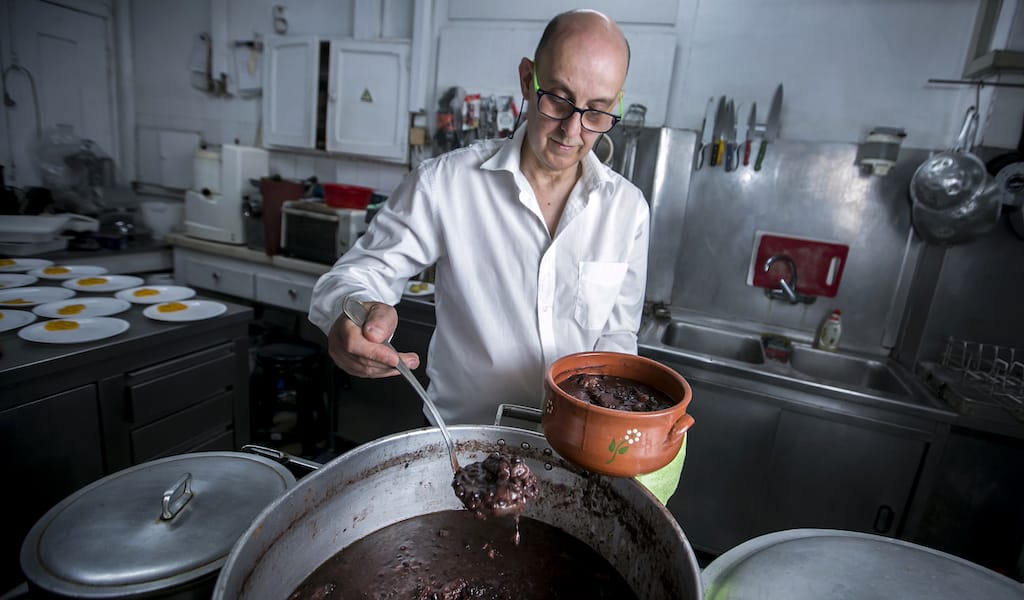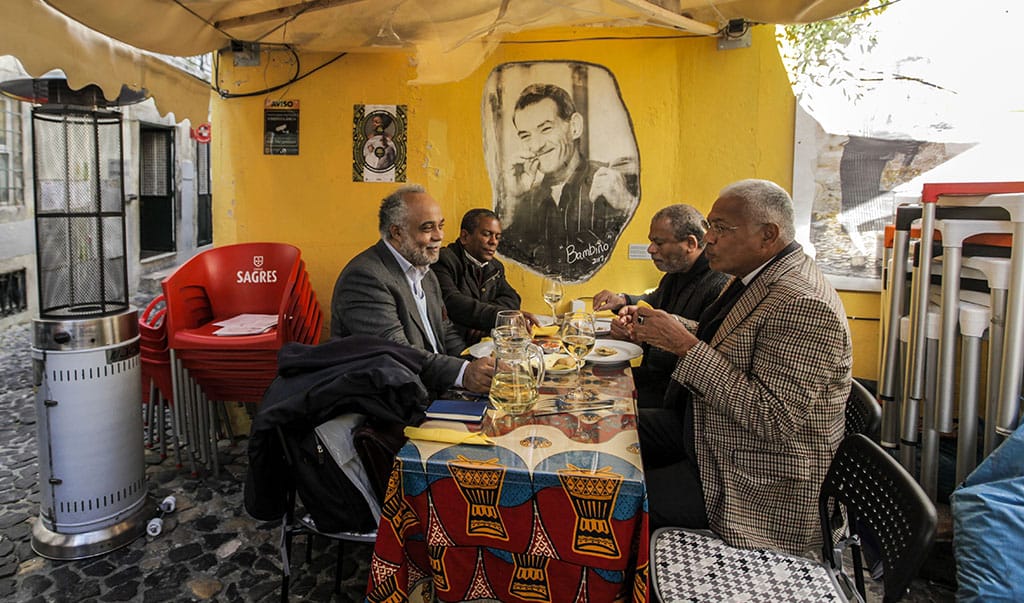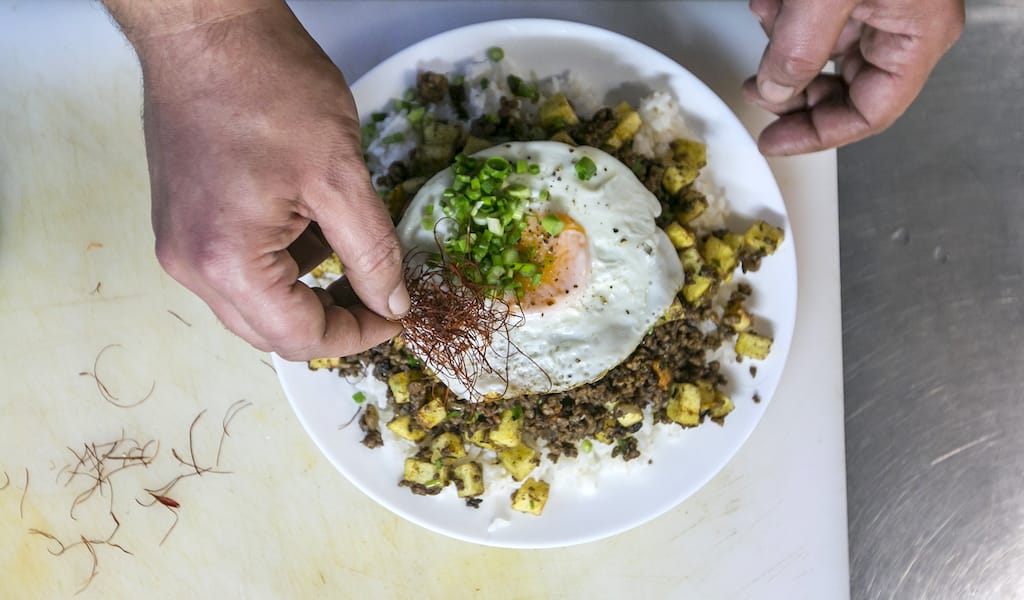Editor’s Note: Though integral elements of Lisbon life, communities from Portugal’s former colonies can sometimes be an invisible presence in their adopted land, pushed out to the periphery. With our “Postcolonial Lisbon” series, CB hopes to bring these communities back into the center, looking at their cuisine, history and cultural life. In this installment, we dive into Lisbon’s Cape Verdean community.
Tambarina: A Taste of Cape Verde
On a narrow and, until recently, slightly forgotten street in Lisbon’s city center, a simple Cape Verdean eatery is holding its own. As one of the few tascas serving up African dishes in this part of town, Tambarina, with its dozen tables and keyboard and mics set up in the corner, bears testimony to this urban quarter’s historical connections to the people of Africa’s northwestern archipelago.
Rua Poço dos Negros – a street whose name (poço means “pit” in Portuguese) reveals a disturbing history as a mass grave site for the bodies of enslaved people – is on the border of what until two decades ago was known as “the triangle.” This is an area extending to São Bento and which in the 1970s became home to a new group of migrant Cape Verdeans.
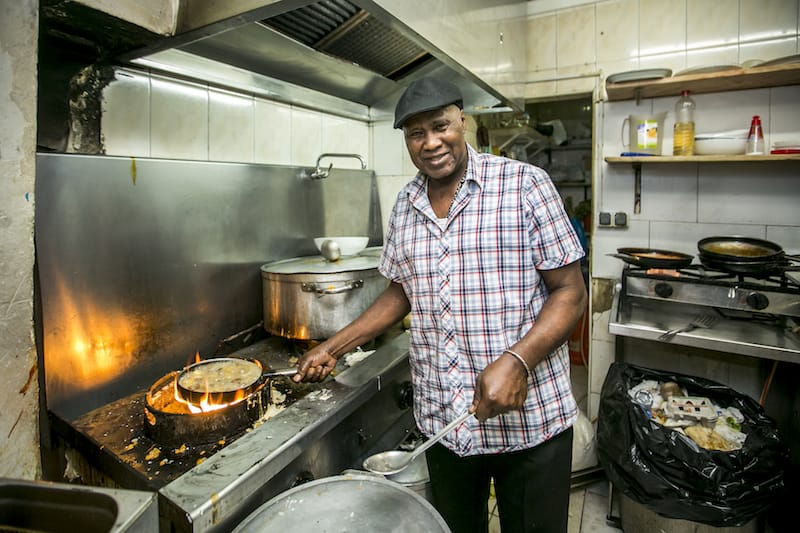 The triangle saw one of the few waves of substantial migration from the colonized islands to the metropolis of the former empire and is nowadays a mix of old multi-family houses – once belonging to the working classes – and new gated condominiums. Only a few members of the Cape Verdean community remain here; the majority of them now live in the city’s peripheral zones such as Amadora, Oeiras and Portela.
The triangle saw one of the few waves of substantial migration from the colonized islands to the metropolis of the former empire and is nowadays a mix of old multi-family houses – once belonging to the working classes – and new gated condominiums. Only a few members of the Cape Verdean community remain here; the majority of them now live in the city’s peripheral zones such as Amadora, Oeiras and Portela.
Domingos de Brito, owner of Tambarina, is one of the few who stayed. Like many others at the time, he arrived from the island of Santiago in 1971 at age 18 to work in construction. His roots are solid in the neighborhood, where he also ran a small enterprise exporting products (including food and clothing) to Cape Verde. Domingos opened the restaurant in 2011 and had to contend with the pressures of prejudice from neighbors and even the police.
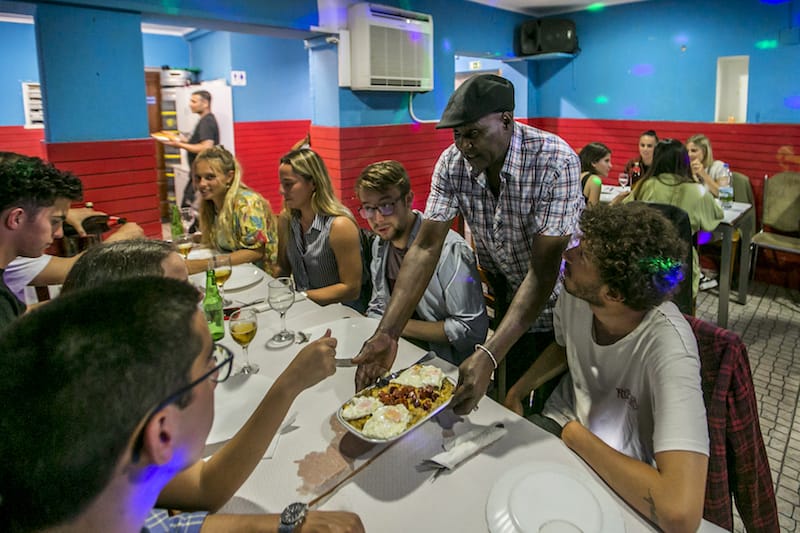
“When I opened, it was a bit complicated; for an African, it is hard to progress in Portugal due to discrimination,” he says. “But now, as I know everyone in the neighborhood, everything is fluid.” In this sense, the name is spot on: Tambarina is a tree that resists difficult conditions, especially drought – a periodic calamity in Cape Verde.
From the start, Tambarina has served up particularly tasty dishes thanks to Domingo’s already extensive culinary experience – as the last of seven brothers, he helped his mother in the kitchen from an early age.
The star dish here is cachupa: the pride of Cape Verdean gastronomy, this slow-cooked stew is made mainly of hominy, beans, cassava, sweet potato and fish or meat (sausage, beef, goat or chicken). In Cape Verde, the dish comes in many forms. At Tambarina, Domingo makes meat, tuna and even vegetarian versions. “The best thing for breakfast is cachupa refogada, re-frying leftovers with eggs and good quality pork sausage [linguiça].” The irony, he says, is that cachupa pobre – the modest version made only with fish –is a far superior dish to cachupa rica – which uses several kinds of meat and is expensive in the archipelago. The key, he says, is that the onions are sautéed in lard.
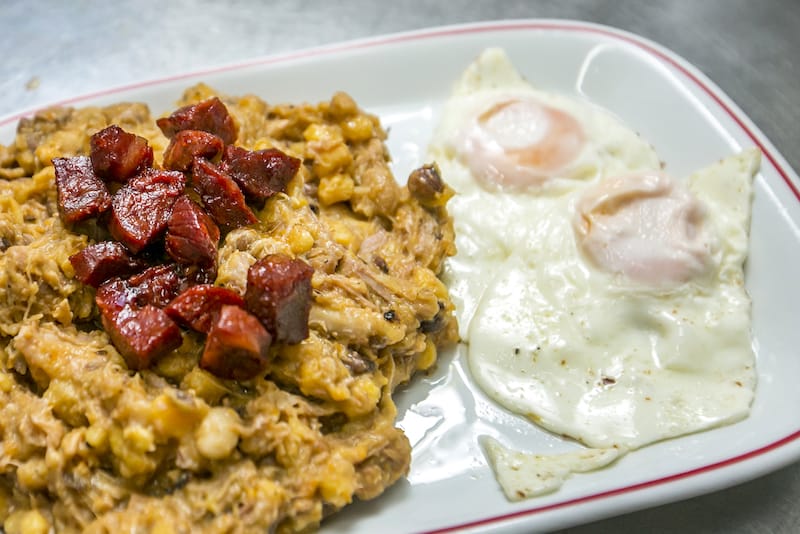
Cachupa is a dish with 500 years of history in Cape Verde and symbolizes the planting of corn and all the practices, techniques and accumulation of knowledge related to it. The ritual of its preparation evokes a sense of belonging and hospitality. More than any other dish, cachupa reveals an authentic expression of Cape Verdean identity.
Some etymologists relate the term “cachupa” to the Spanish cachupina, which refers to the gathering of people around music – a context that could be confirmed by the omnipresence of live music in Cape Verdean restaurants. Tambarina hosts mini-concerts from Thursdays to Sundays: batuque, funaná, colá, coladeira or morna musical styles blare from the speakers, transforming the restaurant into a party after dinner. It’s at this moment of the evening where Domingos usually goes to drag chef Augusta out of the kitchen to dance. “Music from Cape Verde is very sought after. All the genres have especially good rhythms and are lively; if you feel a bit sad, you listen to funaná, and you forget everything!”
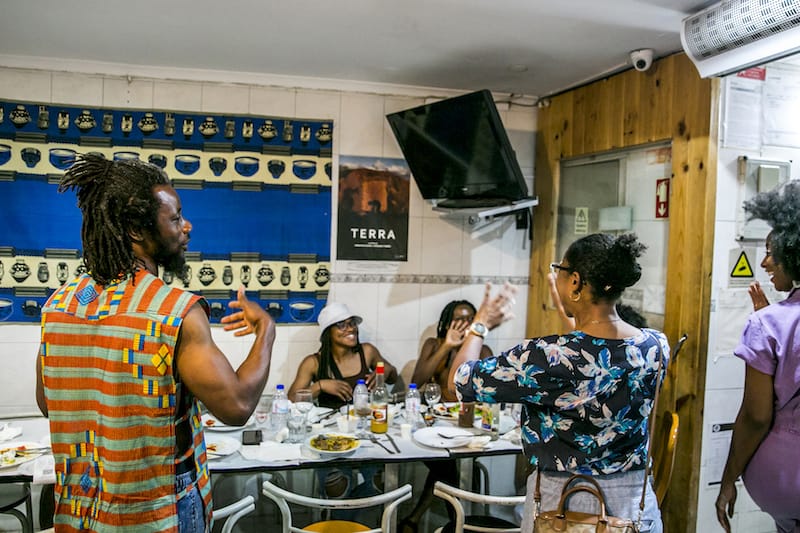
Apart from the cachupa, which sings with flavor, Tambarina also specializes in chicken cooked with beer, grilled fish, tuna belly, veal with cassava and delicious corn pastries. All of these can be washed down with Cape Verdean grog (also grogue in Creole), which is made of a rum distilled from sugar cane from Santo Antão and Santiago islands. Like many of the ingredients that ended up in the archipelago, the abundance of sugar cane in Cape Verde was a consequence of colonization and the slave trade. In typical experimental style, Domingos also makes his own homemade punch, a recipe learned from his father: grog, sugarcane honey (“Not sugar!” he insists), lemon and a secret ingredient he won’t reveal. Whatever it is, it certainly goes well with the music.

Fox Coffee: King of Cachupa
In June 2022, we paid our third visit to the so-called “King of Cachupa” – Tony Fox of Fox Coffee. We worked our way through the menu, trying to identify what was so different and superior about Tony’s take on this signature Cape Verdean dish. (Below is just a sampling of our full review, which you can find here.)
Cachupa rarely deviates from the standard routine. Tony serves his in attractive red pots, and an extra handful of fried onions applied to the refried cachupa were noted with applause around our table. But there’s something more, something unorthodox about this cachupa restaurant that’s hard to define. The cachupa-stuffed cabbage leaf is certainly a sign that something’s unusual at Fox Coffee.
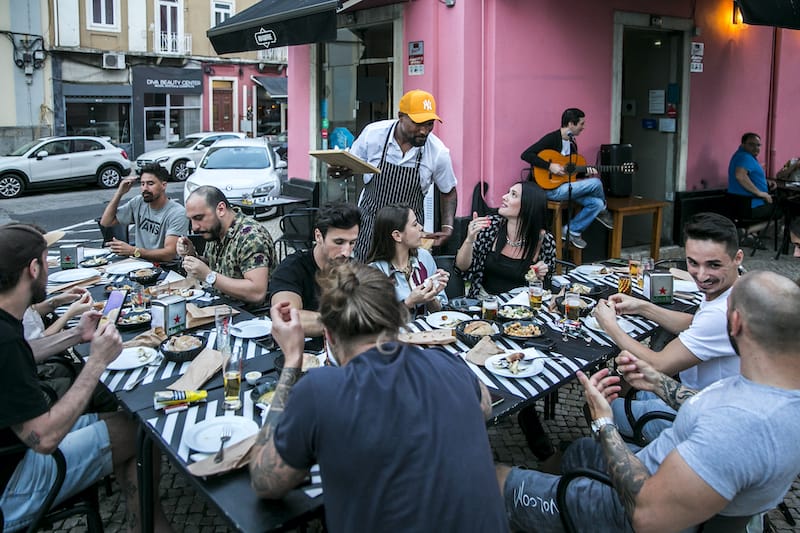
It was a long, windy road that brought the King to Cachupa, with detours that instilled a strong sense of self-reliance in Tony, and a belief in his own destiny. He was born in central Lisbon in June of 1974, just months after the Carnation Revolution ended the Portuguese dictatorship and led to the abrupt end of the colonial wars and independence for Tony’s parents’ homeland, Cape Verde. They named him Antonio for the patron saint of his birth city. “I’m a boy from the city,” he said. “I’ve never even been to Cape Verde.”
He did make his way to the UK, however, working odd jobs and pulling himself out of a difficult period. During the economic crisis of 1981, his family had lost their house and moved to social housing in Lisbon’s east, which was awash in illegal drugs at the time. “I [started] from zero in Portugal, at 39 years old,” he explained. Upon returning to Lisbon to care for his mother, he got a job working security at McDonald’s, and picked up work as a fashion model. Tony still has further plans in the fashion industry, but let’s cut to the cachupa, shall we?
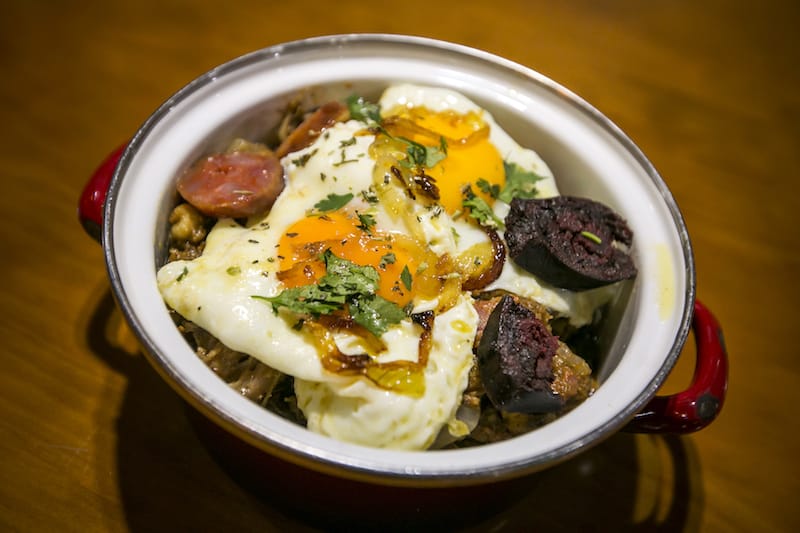
In 2017, Tony took over the lease on a small cafe in the north of Lisbon that served American-style coffee and pastries, renaming it Fox Coffee. A friend suggested he add cachupa to the menu and promised to bring all of his friends after soccer practice to eat. Cachupa wasn’t part of Tony’s master plan at that time, but he agreed to the dinners. To help him prepare these cachupa feasts, Tony summoned a number of relatives – aunts, cousins, his father – learning each of their tricks as he established his own style, which he describes as a “clean” cachupa.
Like most cachupa, Tony’s is based on a selection of three beans and two types of hominy, one paler and one a richer yellow. Though he does cook a vegan cachupa, most recipes call for meat, and he uses only free-range chickens and certain cuts of pork which are carefully selected and cleaned. Farinheira sausage is “disappeared” into the gravy, thickening it and adding flavor, while a thin round of almost-black blood sausage brings seasoning and color to the dish. Tony’s cachupa, particularly the cachupa refogada, which serves as the filling for the cabbage dish, is unusually delicious. Refogada is mostly drained of its liquid and then “refried” in a pan, often served as breakfast cachupa with an egg on top.
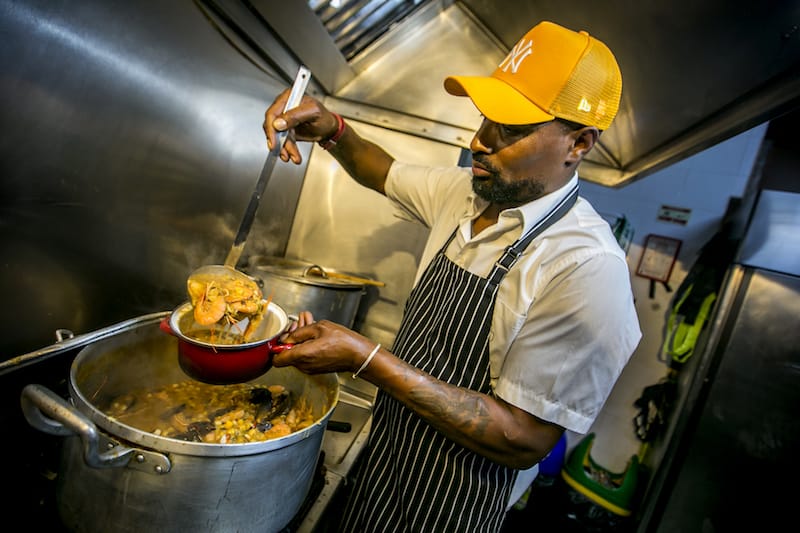
Most Cape Verdean restaurants in Lisbon come from a previous generation of Cape Verdean Lisboeta and are dens of nostalgia, decorated with the Cape Verdean flag and photos of the islands. Fox Coffee, on the other hand, is more enigmatic in its identity. It has a contemporary African look and urban feel, and a menu that reflects the changing tastes of younger generations.
“This is what an African restaurant in a European city can be like in the future. This is the new Lisbon,” Tony said.
Read more about the Cape Verdean community and history in Lisbon – as well as one more spot to get a taste of Cape Verde – in the dropdown below.
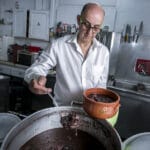 June 27, 2022 Post-Colonial Lisbon: Brazil
June 27, 2022 Post-Colonial Lisbon: Brazil
Editor’s Note: Though integral elements of Lisbon life, communities from Portugal’s […] Posted in Lisbon June 27, 2022 Post-Colonial Lisbon: Mozambique
June 27, 2022 Post-Colonial Lisbon: Mozambique
Editor’s Note: Though integral elements of Lisbon life, communities from Portugal’s […] Posted in Lisbon January 10, 2022 Patuá
January 10, 2022 Patuá
On a hidden street in Lisbon’s residential Anjos neighborhood, Francisco (Chico) Jesus […] Posted in Lisbon
Published on June 28, 2022
Go Deeper
- Learn more about the history of the Cape Verdean community in Lisbon
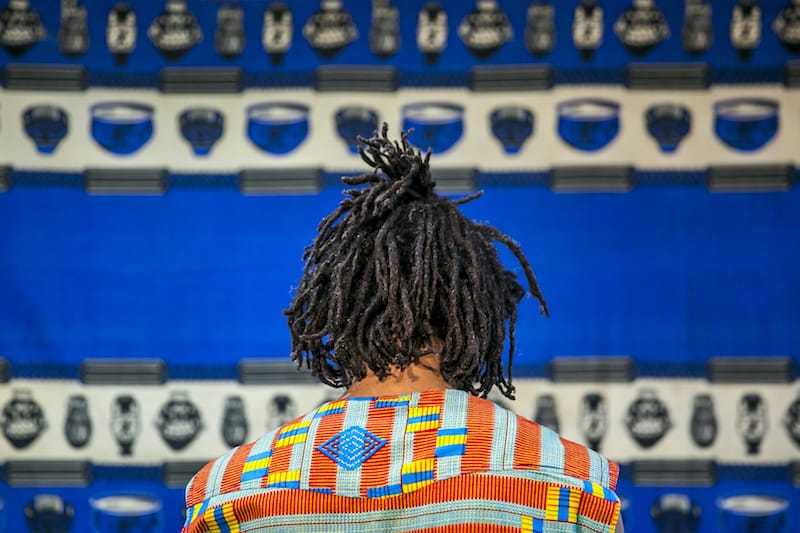
Cape Verdeans, particularly those from the island of Santiago, form one of the biggest migrant communities in Portugal. Because of the cyclical drought that afflicts the 10 volcanic islands making up this archipelago, the country’s sense of homeland coexists with the idea of movement, with Cape Verde recognized by many as an essentially diasporic nation.
Until the 1920s, Cape Verdeans in Portugal were primarily students, merchants or public servants of the empire. The flow increased substantially in the 1960s, due to drought in the Sahel area as well as the demand for construction workers in the empire’s capital. Migrants arriving in Lisbon in the 60s and 70s were almost solely men working in civil construction and at the Lisnave naval shipyard, with the capital’s first metro line, major new roads and utility infrastructure depending on their labor. In the 1980s, Cape Verdean women reached the capital to join their partners; most of them would sell fish in the streets or work as cleaners.
Until 1980, it wasn’t uncommon to find Cape Verdean families living in central – now upmarket – neighborhoods like Campo de Ourique, Estrela and São Bento. The majority of workers, however, lived close to construction sites in self-built peripheral communities that in the 1990s became large-scale housing estates. These urban areas were, and often still are, characterized by racial segregation and social exclusion.
Nowadays, the Cape Verdean community in Lisbon is fragmented according to their level of integration into Portuguese society. While for some there is an improving quality of life, many other Cape Verdeans in Lisbon face thorny housing issues and problems of paperwork and statistics (some Cape Verdeans have no papers, or conversely, have Portuguese nationality, making it hard to study their marginal conditions). In certain ways, many Cape Verdeans remain invisible in their own city.
- Learn more about Cape Verdean cultural spots in Lisbon
- On the last floor of a high building in Marquês de Pombal – Lisbon’s financial and commercial area – is the headquarters of the Associação Cabo Verde, the oldest of its kind in the capital. Its unexpected location aside, it draws many from the community who need support with issues relating to law and integration issues and acts as a central meeting point for all types, including academics. As well as organizing events focusing on post-colonial Cape Verde and its diaspora, the association also hosts regular festive lunches (almoço dancantes), with live music on Thursdays.
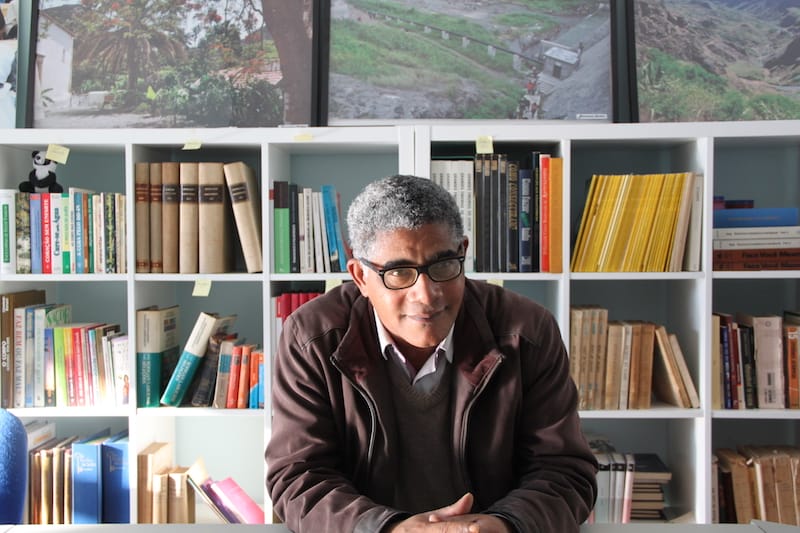
Dr. José Luis Hopffer Almada, the association’s vice president, explained to CB that this multi-roomed space was once a casa do estudante do imperio (house of the students of the empire), an institution that, despite being a tool of the Estado Novo regime, was an important venue in terms of raising awareness about independence (which Cape Verde gained from Portugal in 1975, one year after the Carnation Revolution). The association has since developed different projects over the decades, such as bilingual alphabetization, support for other Cape Verdean associations at the neighborhood level and development as a multi-faceted cultural center.
Nowadays, its raison d’être is to celebrate music and food, with its restaurant open to Cape Verdeans and their friends nearly every day (ultimately, everybody is welcome, Dr. Hopffer says). The space, decorated with paintings and afforded a stunning view thanks to its location on the eighth floor, is often crowded, where eating cachupa to the rapid and melodic sounds of batuqueira comes standard.

Related stories
June 27, 2022
LisbonEditor’s Note: Though integral elements of Lisbon life, communities from Portugal’s former colonies can sometimes be an invisible presence in their adopted land, pushed out to the periphery. With our "Postcolonial Lisbon” series, CB hopes to bring these communities back into the center, looking at their cuisine, history and cultural life. In this installment, we…
June 27, 2022
LisbonEditor’s Note: Though integral elements of Lisbon life, communities from Portugal’s former colonies can sometimes be an invisible presence in their adopted land, pushed out to the periphery. With our “Postcolonial Lisbon” series, CB hopes to bring these communities back into the center, looking at their cuisine, history and cultural life. In this installment, we…
January 10, 2022
LisbonOn a hidden street in Lisbon’s residential Anjos neighborhood, Francisco (Chico) Jesus and Daniela Silvestre are busy prepping for dinner service. It’s still early afternoon, but there’s a lot to do before the doors of Patuá open at 7:30pm. Some Chinese art pieces are scattered about their restaurant, hinting at the tastes to come –…






















































